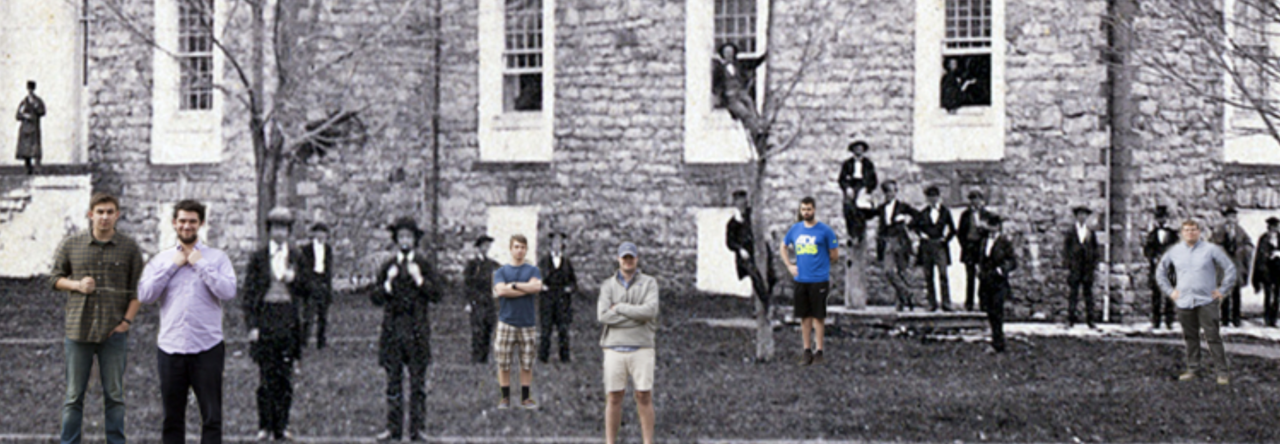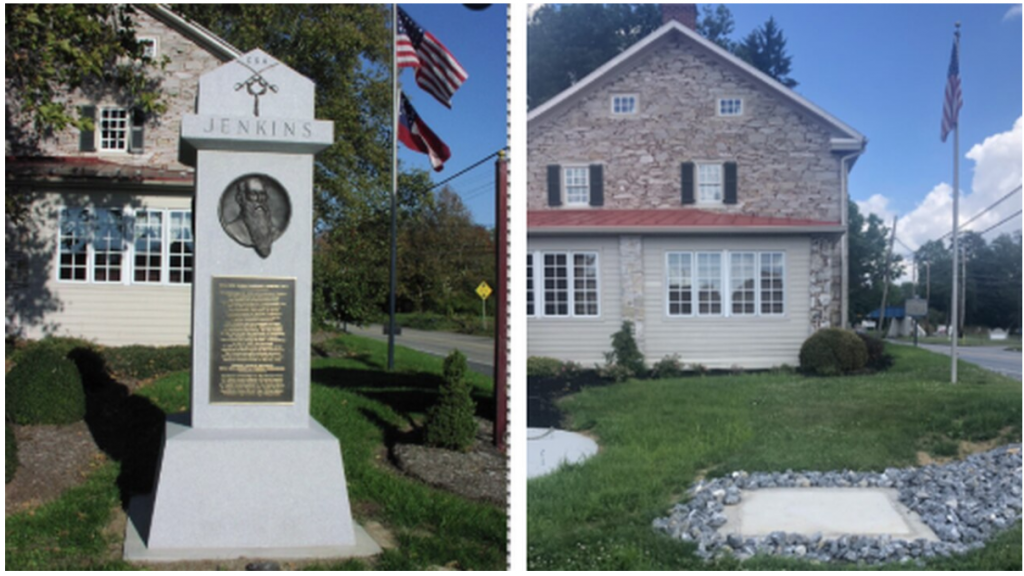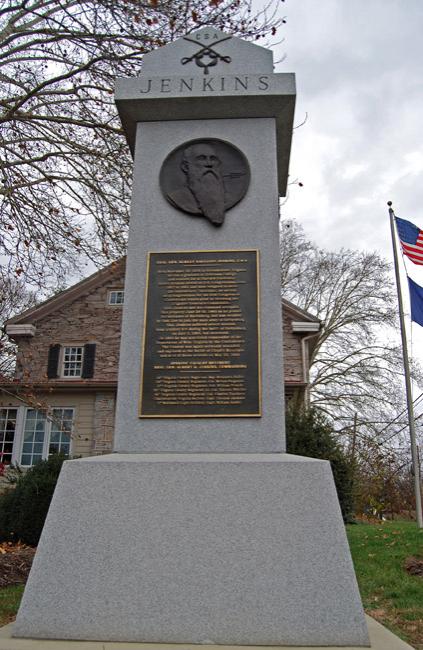UPDATE: The Jenkins monument was removed during the summer of 2020. Read about the details from the Harrisburg Patriot-News coverage (July 3, 2020): “Another Confederate Monument Falls, This Time on the West Shore.”
Original post from 2015:
There is a monument honoring Confederate general Albert Jenkins in Mechanicsburg, Pennsylvania –paid for by donations from local residents and organized by the Camp Curtin Historical Society. It is the northernmost memorial for any Confederate officer and probably the only one paid for by northerners. Yet Jenkins was one of the most controversial Confederate officers, one who destroyed northern civilian property and whose men conducted what they called a “slave hunt,” kidnapping black people during the Gettysburg campaign and hauling them into slavery in the South.
The text of the obelisk reads:
“BRIG. GEN. ALBERT G. JENKINS, C.S.A. Born November 10, 1830 in Greenbottom, Virginia. He was a graduate of Jefferson College and studied law at Harvard University. Albert Jenkins served as U.S. Congressman from 1857 to 1861 and then resigned to serve the Confederacy. Thereafter, he served as a Congressman for in the First Congress of the Confederate States prior to receiving his Brigadier General’s commission. Gen. Jenkins and his command occupied this property June 28-30, 1863 as he probed the defenses of Harrisburg, but was recalled by Gen. Lee to join the main army at Gettysburg. Gen. Jenkins suffered severe wounds from artillery fire during the Battle of Gettysburg on July 2, 1863 but recovered. In 1864, he was appointed commander of the Department of Western Virginia by the Confederacy. The General was again seriously wounded and captured at the Battle of Cloyd’s Mountain and died of those wounds on May 21, 1864.”
You can read more about Albert Jenkins at the House Divided Project research engine and more about the planning for the memorial at Camp Curtin Historical Society. To learn more about the “slave hunt” conducted by Jenkins’s cavalry, see these articles from the Pittsburgh Post-Gazette and the New York Times Disunion series. On the question of whether or not this monument stands as a helpful symbol of national reconciliation or as a disgraceful obliteration of the past, that is for readers to decide but we would welcome your comments below.
However, before you venture a judgment about the monument in Mechanicsburg, it is worth putting this issue into national context. There has been a recent movement to remove Confederate flags and monuments across the South. This happened in the aftermath of the June 2015 mass shooting at a historic black church in Charleston, South Carolina. Here are some helpful articles on the impact of that tragedy and the subsequent political battles that have been erupting over Confederate heritage and history:
- Ta-Nehisi Coates, “Take Down the Confederate Flag Now,” The Atlantic, June 18, 2015
- Ethan J. Kytle and Blain Roberts, “Take Down the Confederate Flags, But Not the Monuments,” The Atlantic, June 25, 2015
- “Confronting the Past,” Inside Higher Ed, January 6, 2016
This post originally appeared in April 2015 and has been updated at various times to reflect developments in the debates over Confederate flags and monuments and following the removal of the monument itself in July 2020.



Morgan Mortimer
Initially after reading this, I thought that maybe this monument was erected by a pro-confederate group, but it does not appear to be that way. They also put up a monument to Union soldiers. To me it looks like they were putting up monuments to American soldiers who died fighting each other. The money for the statues was not state or federal money either. It was private money donated to make the monuments. They are also located on private property, so the state has not done anything wrong with putting up possibly racial monuments. every battle has two sides, these memorials are to remember both of those sides and the people that died in Mechanicsburg. There is a difference between flying the confederate flag, and putting up monuments, or even keeping existing monuments, to remember fallen soldiers. It also depends on whether or not the the state, the nation, or a private entity is the one paying for a statue for remembering the Confederacy.
Nissa
I am a decendent of Albert G. Jenkins. And I love history, do I agree with everything he did, no. Memorials need to stay up especially if they were put up by the people of the town that the memorial is in. Just because we don’t like something doesn’t mean we have to tear it down, I mean really we tear down the ten commandments monument too, why? This time period was just part of our horrible history we had, how are we to learn or our children if they don’t hear or see these monuments and learn from the past.
Emmy
I don’t agree he should’ve ever had a monument in Mechanicsburg, Pennsylvania. Strange it was even erected in 2005. Thankfully it’s gone now. He had no connection to this state and doesn’t need recognition here.